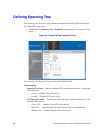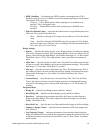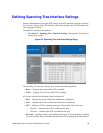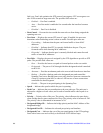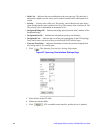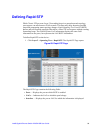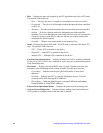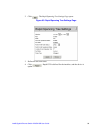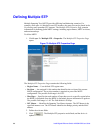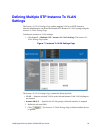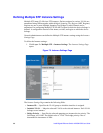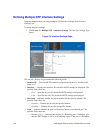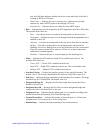94 Intel® Gigabit Ethernet Switch AXXSW1GB User Guide
• Role — Displays the port role assigned by the STP algorithm to provide to STP paths.
The possible field values are:
— Root — Provides the lowest cost path to forward packets to the root switch.
— Designated — The port or LAG through which the designated switch is attached
to the LAN.
— Alternate — Provides an alternate path to the root switch from the root interface.
— Backup — Provides a backup path to the designated port path toward the
Spanning Tree leaves. Backup ports occur only when two ports are connected in
a loop by a point-to-point link, or when a LAN has two or more connections
connected to a shared segment.
— Disabled — The port is not participating in the Spanning Tree.
• Mode—Displays the current STP mode. The STP mode is selected in the Rapid STP
Page. The possible field values are:
— STP — Classic STP is enabled on the device.
— Rapid STP — Rapid STP is enabled on the device.
— Multiple STP — Multiple STP is enabled on the device.
• Fast Link Operational Status — Indicates whether Fast Link is enabled or disabled
for the port or LAG. If Fast Link is enabled for a port, the port is automatically placed
in the forwarding state.
• Port Status — Displays the current RSTP state of a port. If enabled, the port state
determines what forwarding action is taken on traffic. Possible port states are:
—Forwarding — Indicates that the port can forward traffic or learn MAC
addresses.
— Disabled — Indicates that STP is currently disabled on the port. The port
forwards traffic while learning MAC addresses.
—
Discarding — Indicates that the port is currently blocked and cannot
forward traffic or learn MAC addresses
• Point-to-Point Operational Status — Displays the point-to-point operating state.
• Activate Protocol Migration — Indicates whether sending Link Control Protocol
(LCP) packets to configure and test the data link is enabled.



